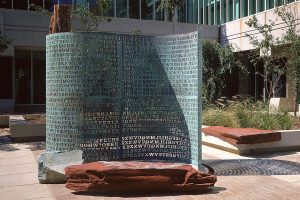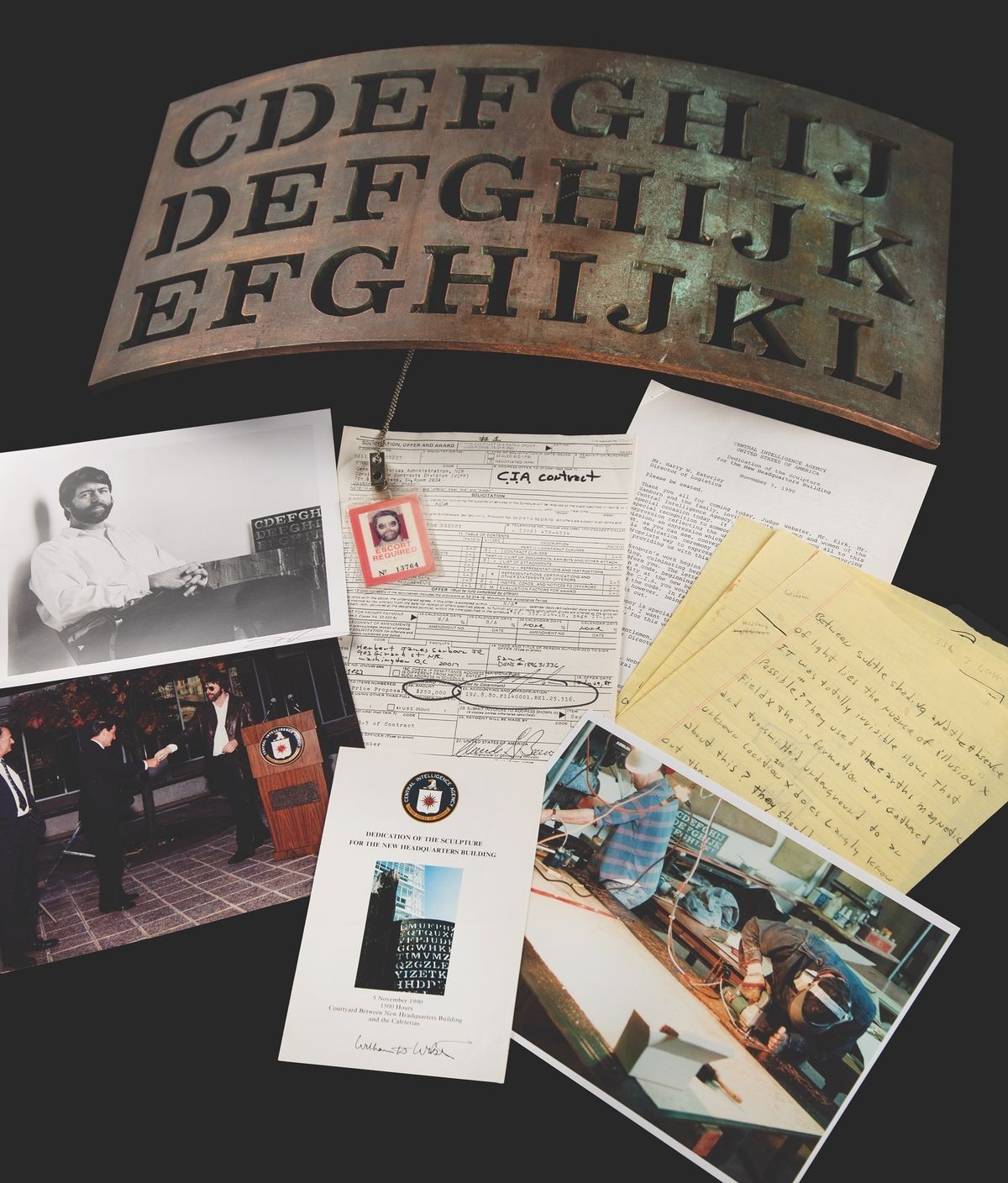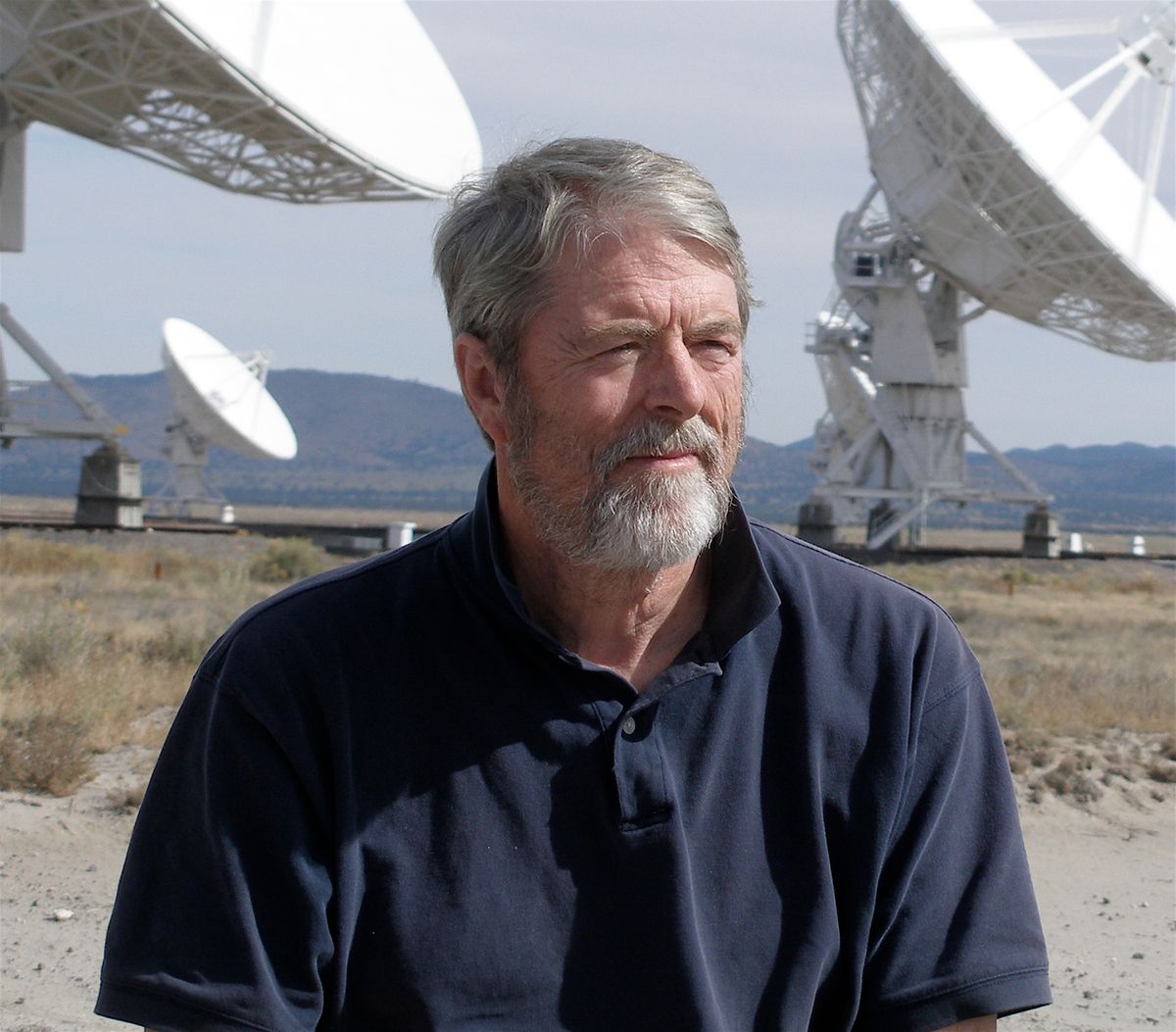BOSTON (AP) — When Jim Sanborn was commissioned to create a sculpture at CIA headquarters, he wanted to do something that spoke to its world of spies and secret codes.
The result was a 10-foot-tall, S-shaped copper screen called “Kryptos” that resembles a piece of paper coming out of a fax machine. One side features a series of staggered alphabets that are key to decoding the four encrypted messages on the other side.
“At the time, codes and encoding was an esoteric subject,” Sanborn said. “I wanted it to be less so, and I wanted it to be fun. … Any artist’s goal when they make an artwork is to have the viewer’s attention for as long as possible.”
Sanborn figured the first three messages on the sculpture, dedicated in 1990 and known as K1, K2 and K3, would be cracked relatively quickly, and they were.
But 35 years later, the fourth, K4, remains a mystery and a source of obsessive fascination among thousands of “Kryptos” fans. One person has contacted Sanborn every week for the past 20 years, trying to solve K4, and the artist received so many inquiries that he began charging $50 per submission to make it more manageable.
Now, Sanborn, who at age 79 has had a series of health scares in recent years, is auctioning off the solution to K4, anointing a new “Kryptos” keeper whom he hopes will keep its secrets and continue interacting with followers.
Finding the next keeper
Boston-based RR Auction launched the auction last month. It runs through Nov. 20, with the top bid currently at $201,841 for the “Kryptos” archive.
“Since its installation in 1990, ‘Kryptos’ has become a worldwide phenomenon,” said Bobby Livingston, executive vice president at RR Auction. “K4 has stumped professional cryptologists and code breakers as well as amateurs who have tried to solve it and read the message. The winner of this archive is now going to possess the secrets of ‘Kryptos.’”
The archive includes everything needed to solve K4, along with an alternate paragraph that the artist is calling K5. The original coding charts for K1, K2 and K3 will also be up for bid, along with the original scrambled texts, which Sanborn said he showed to the CIA’s Department of Historical Intelligence to ensure the agency understood there was nothing “untoward” on the sculpture.
Sanborn has created about 50 public sculptures, including a memorial for a 2019 mass shooting in Odessa, Texas, but he is best known for “Kryptos.” Over the years, snippets from the cryptic sculpture appeared on the dust jacket of the Dan Brown bestseller “The Da Vinci Code” and were mentioned in a chapter of Brown’s book “The Lost Symbol.”
Auction almost derailed
In September, Sanborn got a phone call from two “Kryptos” sleuths. Tipped off by the auction listing, writer and researcher Jarett Kobek asked playwright and journalist Richard Byrne to take photos of Sanborn’s papers at the Smithsonian’s Archives of American Art. Among the papers were Sanborn’s original scrambled texts.
Kobek said he had hoped to discover “a document that had some vague hint of about how K4 was encoded,” but was astonished to realize they had stumbled upon the text itself instead.
Sanborn was initially “shocked” by the call, and he and his wife, Jae Ko, “just sort of put our heads in our hands.” He was mostly upset at himself for putting the texts into the archive — he has since sealed his papers so they can’t be accessed for the next 50 years. RR Auction also deleted any mention of the Smithsonian in connection with the auction.
“It was miserable, and it’s still miserable,” Sanborn said. “It’s very difficult. There’s a lot of regret and anguish.”
Sanborn initially figured that the discovery meant the auction could not proceed. But he decided to proceed anyway, while changing it from just offering the secrets to K4 to offering the entire archive. RR Auction also acknowledged the pair’s discovery on the auction description, though Kobek said that came weeks afterward.
“The important distinction is that they discovered it. They did not decipher it,” Sanborn said. “They do not have the key. They don’t have the method with which it’s deciphered. To the entire cryptographic community, that method is the real deal, and nobody has the method but me.”
Keeping K4 a secret
Elonka Dunin, co-moderator of the largest group of “Kryptos” enthusiasts, said most people she has talked with want K4 kept secret. “There is a very strong desire that we would like to know whether K4 is even solvable,” she said.
Sanborn came up with the texts, and a retired CIA cryptographer showed him several systems for encoding them. The paragraphs, he said, were “designed to unravel like a ball of string” or “nesting Russian dolls” and get increasingly difficult.
Still, Sanborn and RR Auction aren’t taking any chances. Sanborn unsuccessfully asked Kobek and Byrne to sign a nondisclosure agreement that included giving them a portion of the auction proceeds. RR Auction also sent the pair scores of emails threatening legal action for everything from trade secret violations to defamation.
Kobek, a self-described fan of “Kryptos” and the artist, has no plans to release the text publicly, though he read it over the phone to a New York Times journalist who was the first to report their discovery. Still, he wants the auction house and others to respect their discovery, noting that allies during World War II used weather reports to help solve encrypted messages.
“I’m the first person to say that it was not a mathematically cryptographic solve. One hundred percent. There’s no way that it was,” Kobek said. “But to pretend that this has no connection to the history of cryptography is little more than advertising for an auction.”
By MICHAEL CASEY
Associated Press




